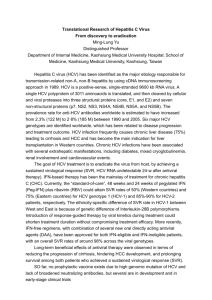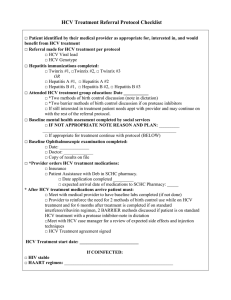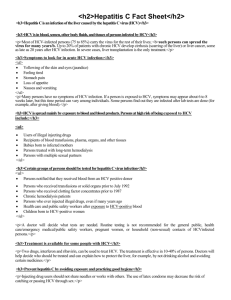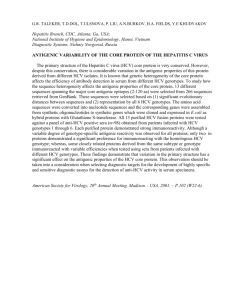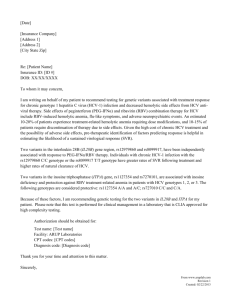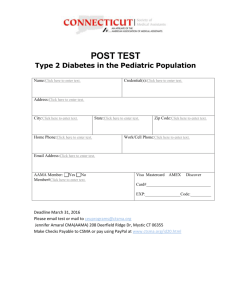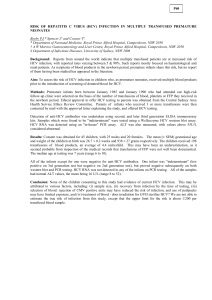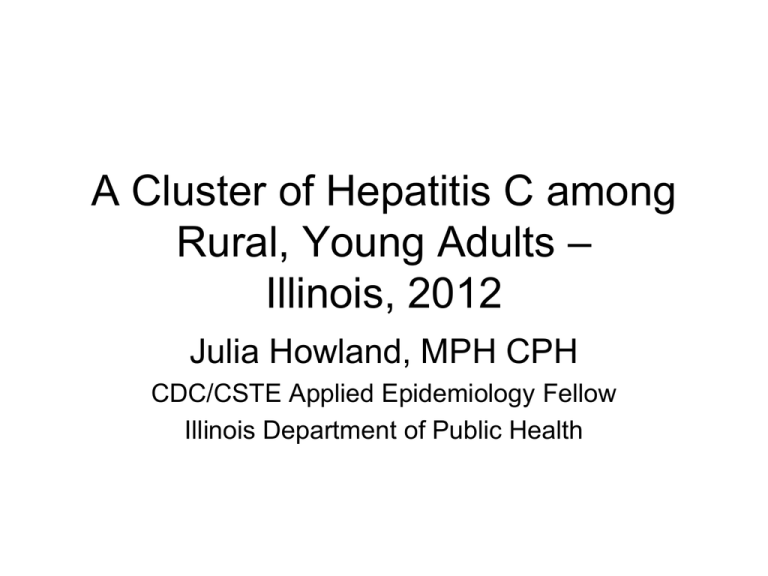
A Cluster of Hepatitis C among
Rural, Young Adults –
Illinois, 2012
Julia Howland, MPH CPH
CDC/CSTE Applied Epidemiology Fellow
Illinois Department of Public Health
Background: hepatitis C
• Approximately 4.1 million Americans and 300
million people worldwide are infected with the
hepatitis C virus (HCV)
• Leading cause of chronic liver disease and liver
transplantation and causes 10,000-20,000
deaths per year in the US
• Male sex, black race, age 45-65, history of IDU,
and receipt of a blood or soft tissue donation
before 1992 are risk factors. Illicit, and
specifically injection, drug use is the most
common risk factor.
Hepatitis in young adults
• Increased cases described in New York, Massachusetts and
Wisconsin:
–
–
–
–
–
Young adults
White
Rural, suburban communities
Equal male and female
Injection opiate use
(Onofrey, Church, Kludt et al, 2011)
Background: the outbreak
• February 2012: a communicable disease
nurse at a local health department (LHD)
in a small, rural county in southern Illinois
(county A) contacted the Illinois
Department of Public Health (IDPH) to
report four cases of acute HCV occurring
within three months
Methods: case identification
• Cases were defined as laboratory confirmed
cases of HCV ages 15-34 (young adult) from
January 2010 – present with a home address in
County A
• Cases were identified through provider reporting
to the state reportable disease surveillance
system and contact tracing
• The LHD conducted initial interviews with the
reported cases to determine risk factors and
symptoms
Methods: data collection
• Medical and public health records were
abstracted for co-morbidities, risk
behaviors, and HCV diagnosis
• We interviewed cases for risk behaviors,
symptoms, and contacts
• Contacts were offered HCV testing and
interviewed
Results: case characteristics
• Thirteen cases were identified. Five met the
case definition for acute infection
• Ten (76.9%) were identified through
surveillance, three (23.1%) were contacts
• Four cases (30.8%) were interviewed
• The mean age of cases was 25.2 (range 15-34)
• All cases were white, non-Hispanic. Six cases
were female.
• Seven (53.8%) cases were symptomatic at the
time of HCV diagnosis.
Results: co-morbidities
• Eleven (84.6%) cases had a history of illicit drug
use, ten (76.9%) of injection drug use
• Six used methamphetamine and prescription
opiates and five used heroin
• Six of seven cases had mental health diagnosis
• No cases had a history of HBV or HIV
• Of the four cases interviewed, all reported
sharing drug preparation equipment and drug
snorting equipment. Three shared needles.
Case connections
• Three interviewed cases identified
contacts
• Six of 13 cases connected to one another
– Five through drug use
– One through sexual contact
HCV in rural Illinois
• In 2005, the state young
adult rate was 8.4/
100,000 young adults.
By 2011, the rate was
28.0
– 50% female
– 84.4% white
• 2011 rate of HCV among
young adults (age 15-34)
in County A was 82.24/
100,000 young adults
Conclusions
• Hepatitis C is an emerging problem among
young, rural adults
• Enhanced surveillance may be warranted
among young adults
• Infection prevention efforts should focus
on:
– Safe injection practices
– Provider awareness of HCV infection among
young adults
Acknowledgments
Dr. Yoran Grant
Dr. Craig Conover
The Illinois Department of Public Health
The CDC/CSTE Applied Epidemiology
Fellowship Program
Author contact
Julia Howland
Illinois Department of Public Health
Division of Infectious Diseases
312-793-0098
Julia.Howland@Illinois.gov

